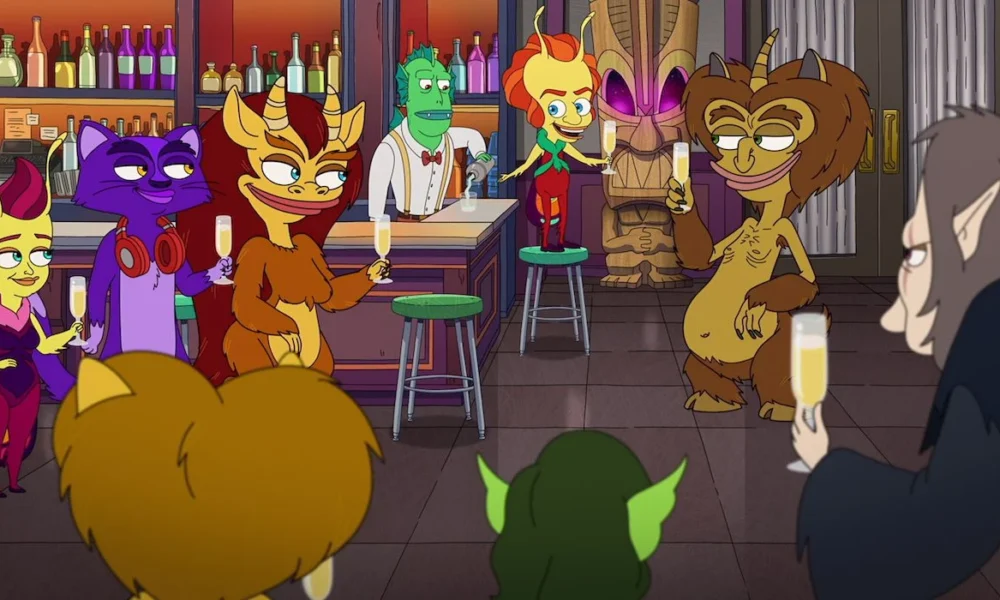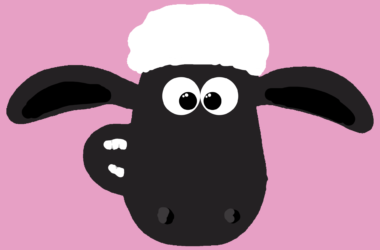In the mythical world of Big Mouth’s spinoff series, the department of Human Resources in question may appear like any other: Employees attend boring meetings, unpaid interns pretend to take minutes, gossip is exchanged in the elevator, and love triangles brew between coworkers. But viewers should not let this department’s name obscure its important purpose. In this series, Human Resources has a purpose far greater than filing complaints. Rather, its employees are tasked with the important responsibility of dispensing and controlling the emotions of each human alive on Earth.
The animated Netflix series, which premiered on March 18, follows an array of different creatures, each embodying a different human dimension of human personality as they navigate office life. These creatures include mosquitos for anxiety, glowbugs for love, and rocks for logic. The show centres around the office intern, Lovebug Emmy (Aidy Bryant), after she is abruptly assigned to her first human client, Becca (Ali Wong). As the season progresses, Emmy grows into her role as a lovebug and fosters new relationships with Becca and her other coworkers. The show also features returning creatures from Big Mouth, like raunchy hormone monsters Maury (Nick Kroll) and Connie (Maya Rudolph).
Human Resources diverges from Big Mouth in its decision to focus on the lives of adults instead of adolescents, expanding on the diversity of human experiences that it explores. For example, the series follows Becca as she copes with postpartum depression and feelings of shame for not feeling an immediate connection to her baby. Another particularly touching storyline follows an elderly woman with Alzheimer’s disease, Yara (Nidah Barber), who revisits old memories of her young romances accompanied by her lovebug, Walter (Brandon Kyle Goodman). Through Yara’s story, the series illustrates the complicated and bittersweet nature of experiencing love while coping with dementia. Meanwhile, Yara’s son Amir (Ahmed El-Mawas) cares for her with the help of his logic rock, Pete (Randall Park). At the same time, he tries to avoid the creature representing grief—a seemingly docile sweater—which grows violent each moment it’s ignored. Through focussing attention on the complexity of adult emotions and experiences, the series highlights how the responsibilities associated with maturity can impact mental health. Because they must provide for their family and earn money, humans in Human Resources tend to prioritize certain feelings over others to an extent that the younger characters of Big Mouth do not. By representing love, grief, anxiety, and shame through exuberant creatures, the show lends a lightheartedness to these dark subjects while simultaneously treating characters affected with empathy and understanding.
One of the most disappointing features of the show is its attempt to incorporate returning cast members Maury and Connie as side characters. Because the focus in Big Mouth is on humans, the hormone monsters are almost always portrayed alongside their restrained clients. This contrast between ordinary human characters and the obscenity of their hormone monsters was a crucial part of Big Mouth’s humour. But in Human Resources, they mainly interact with each other or other hormone monsters. Creators likely chose to include them in the series to please returning fans of Big Mouth, but it has the consequence of diluting the entertainment factor of Maury and Connie. Without their more serious characters to balance their crass humour, their obscenities don’t stand out. Instead, their normally sharp, punchy jokes are wasted on each other and conversations quickly get stale.
Human Resources likely wasn’t created with the expectation, or intention, of upstaging Big Mouth. It’s difficult to create a new show distinct enough from the original to stand alone while still appealing to returning viewers. Given the creative limitations associated with creating a spinoff series, Human Resources ‘s explorations of new human perspectives, without sacrificing the entertainment audiences expect, is particularly impressive. Talented voice actors, a colourful animation style, and smart writing also endow the show with a humour that balances being lighthearted and sharp. Though it does suffer by isolating Maury and Connie from the other characters, the show’s depth adds to the Big Mouth universe, and the humour with which it approaches sensitive topics make it worth a watch.









